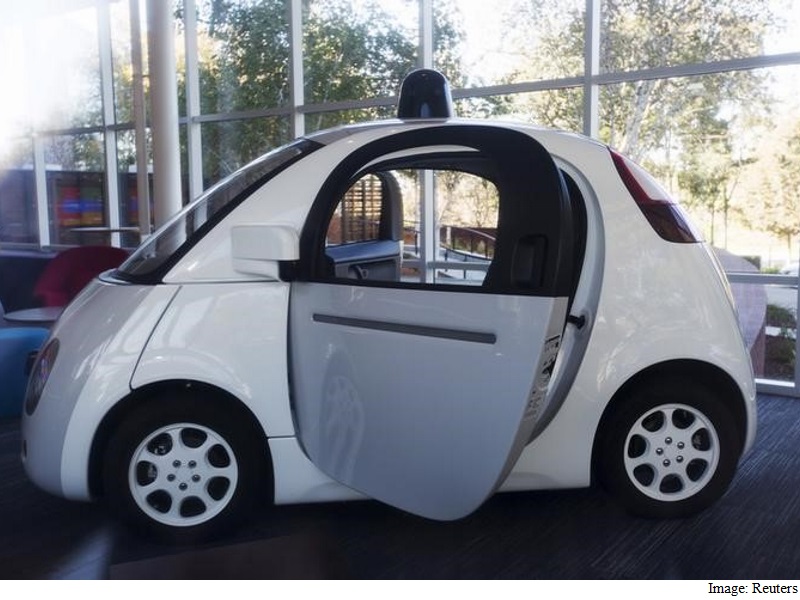- Home
- Others
- Others News
- US Says Computers in Google Self Driving Cars Qualify as Drivers
US Says Computers in Google Self-Driving Cars Qualify as Drivers

The National Highway Traffic Safety Administration told Google, a unit of Alphabet Inc, of its decision in a previously unreported Feb. 4 letter to the company posted on the agency's website this week.
Google's self-driving car unit on November 12 submitted a proposed design for a self-driving car that has "no need for a human driver," the letter to Google from National Highway Traffic Safety Administration Chief Counsel Paul Hemmersbaugh said.
"NHTSA will interpret 'driver' in the context of Google's described motor vehicle design as referring to the (self-driving system), and not to any of the vehicle occupants," NHTSA's letter said.
"We agree with Google its (self-driving car) will not have a 'driver' in the traditional sense that vehicles have had drivers during the last more than one hundred years."
Major automakers and technology companies such as Google are racing to develop and sell vehicles that can drive themselves at least part of the time.
(Also see: How Google's Driverless Car Stacks Up Against the Competition)
All participants in the autonomous driving race complain that state and federal safety rules are impeding testing and eventual deployment of such vehicles. California has proposed draft rules requiring steering wheels and a licensed driver in all self-driving cars.
Karl Brauer, senior analyst for the Kelley Blue Book automotive research firm, said there were still significant legal questions surrounding autonomous vehicles.
But if "NHTSA is prepared to name artificial intelligence as a viable alternative to human-controlled vehicles, it could substantially streamline the process of putting autonomous vehicles on the road," he said.
If the car's computer is the driver for legal purposes, then it clears the way for Google or automakers to design vehicle systems that communicate directly with the vehicle's artificial pilot.
In its response to Google, the federal agency offered its most comprehensive map yet of the legal obstacles to putting fully autonomous vehicles on the road. It noted existing regulations requiring some auto safety equipment can not be waived immediately, including requirements for braking systems activated by foot control.
(Also see: US Pledges $4 Billion to Boost Self-Driving Cars)
"The next question is whether and how Google could certify that the (self-driving system) meets a standard developed and designed to apply to a vehicle with a human driver," NHTSA said.
Google is "still evaluating" NHTSA's lengthy response, a company spokesperson said on Tuesday. Google executives have said they would likely partner with established automakers to build self-driving cars.
Worries about people undermining safety
Google told NHTSA that the real danger is having auto safety features that could tempt humans to try to take control.
Google "expresses concern that providing human occupants of the vehicle with mechanisms to control things like steering, acceleration, braking... could be detrimental to safety because the human occupants could attempt to override the (self-driving system's) decisions," the NHTSA letter stated.
NHTSA's Hemmersbaugh said federal regulations requiring equipment like steering wheels and brake pedals would have to be formally rewritten before Google could offer cars without those features.
For example, current federal rules require alerts on dashboards if tire pressure runs low. NHTSA said a test would need to be created that shows the vehicle computer is informed of the problem. NHTSA raised the question of whether humans in the vehicles should also be made aware.
In January, NHTSA said it may waive some vehicle safety rules to allow more driverless cars to operate on US roads as part of a broader effort to speed up development of self-driving vehicles.
NHTSA said then it would write guidelines for self-driving cars within six months. Transportation Secretary Anthony Foxx said the administration may seek new legal authority to allow deployment of autonomous vehicles "in large numbers," when they are deemed safe, the department said.
The process of rewriting federal regulations governing the design, placement and operation of vehicle controls could take months or years. The NHTSA counsel said Google could consider applying for exemptions for certain regulations, providing NHTSA with supporting documents.
© Thomson Reuters 2016
Catch the latest from the Consumer Electronics Show on Gadgets 360, at our CES 2026 hub.
Related Stories
- Samsung Galaxy Unpacked 2025
- ChatGPT
- Redmi Note 14 Pro+
- iPhone 16
- Apple Vision Pro
- Oneplus 12
- OnePlus Nord CE 3 Lite 5G
- iPhone 13
- Xiaomi 14 Pro
- Oppo Find N3
- Tecno Spark Go (2023)
- Realme V30
- Best Phones Under 25000
- Samsung Galaxy S24 Series
- Cryptocurrency
- iQoo 12
- Samsung Galaxy S24 Ultra
- Giottus
- Samsung Galaxy Z Flip 5
- Apple 'Scary Fast'
- Housefull 5
- GoPro Hero 12 Black Review
- Invincible Season 2
- JioGlass
- HD Ready TV
- Laptop Under 50000
- Smartwatch Under 10000
- Latest Mobile Phones
- Compare Phones
- OPPO Reno 15 Pro Max
- Honor Win RT
- Honor Win
- Xiaomi 17 Ultra Leica Edition
- Xiaomi 17 Ultra
- Huawei Nova 15
- Huawei Nova 15 Pro
- Huawei Nova 15 Ultra
- Asus ProArt P16
- MacBook Pro 14-inch (M5, 2025)
- OPPO Pad Air 5
- Huawei MatePad 11.5 (2026)
- Xiaomi Watch 5
- Huawei Watch 10th Anniversary Edition
- Acerpure Nitro Z Series 100-inch QLED TV
- Samsung 43 Inch LED Ultra HD (4K) Smart TV (UA43UE81AFULXL)
- Asus ROG Ally
- Nintendo Switch Lite
- Haier 1.6 Ton 5 Star Inverter Split AC (HSU19G-MZAID5BN-INV)
- Haier 1.6 Ton 5 Star Inverter Split AC (HSU19G-MZAIM5BN-INV)

















